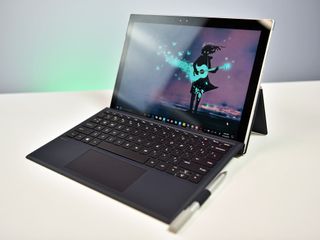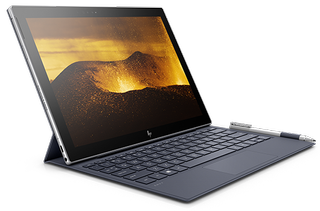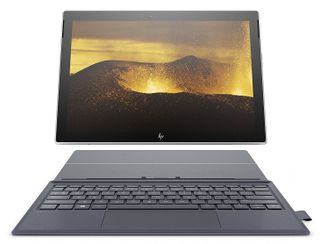HP Envy x2 with Qualcomm Snapdragon vs. Intel: Which should you buy?
At Windows Central, we live and breath laptops, testing all the top new models. We've put both the Qualcomm and Intel-powered versions of the HP Envy x2 through their paces and can comfortably say that you should avoid the Intel.


Best experience
The HP Envy x2 is an early look at the future of always-connected mobile computing with true all-day battery life.
For
- Amazing battery life
- Instant-on and always connected
- Substantially better keyboard and kickstand
- Cheaper than the Intel version
- Free upgrade to Windows 10 Pro
Against
- Legacy apps don't run as well as Store apps.
- Still some compatibility issues

Best compatibility
Better for traditional Windows desktop apps, that is, ones not from the Microsoft Store, but is more expensive, has less battery life, and a much worse keyboard.
For
- More outright power than the Qualcomm version.
- Superior support for legacy apps.
- Less compatibility issues all round.
Against
- Battery life is good but not great.
- The keyboard and trackpad are awful.
- The kickstand has only one position.
- Loses instant-on and always connected features with Intel.
- Windows 10 Pro upgrades cost $99.
These two devices may have the same name but they are in fact very different. For the majority of people, the lower price, better battery life, and superior keyboard of the Qualcomm version will outweigh the better compatibility with non-Store apps that an Intel processor provides.
Qualcomm vs. Intel: Spec comparison
| Header Cell - Column 0 | HP Envy x2 (Intel) | HP Envy x2 (Qualcomm) |
|---|---|---|
| Processor | Intel Core i5-7Y54 (7th Gen) | Qualcomm Snapdragon 835 |
| RAM | 4GB | 4 GB |
| Storage | 128GB M.2 SSD | Universal Flash Storage (UFS) 128GB |
| Display size | 12.3 inches Touch | 12.3 inches Touch |
| Display resolution | 1,920 x 1,280 3:2 aspect ratio | 1,920 x 1,280 3:2 aspect ratio |
| Graphics | Intel HD Graphics 615 | Qualcomm Adreno 540 |
| Ports | Two USB-C (Gen 1, DisplayPort 1.3 Power Delivery), microSD, headphone and mic, SIM tray | USB-C 3.1 microSD card reader 3.5 mm audio SIM |
| LTE | Yes | Yes |
| Biometrics | IR camera for Windows Hello | IR camera for Windows Hello |
| Battery | Up to 17.5 hours | Up to 19 hours |
The HP Envy x2 with Qualcomm has a better kickstand and keyboard
On the Qualcomm version of the Envy x2 you get a Surface-like fold-out kickstand attached to the keyboard folio. On the Intel version, the stand is a "pull out and reset" like you used to get from Samsung and on devices like the first Huawei MateBook.
This means the Qualcomm one is adjustable, while the Intel only has two positions, leading to a much more restrictive and frustrating experience.
The keyboard on the Intel version is also just not as good as its Qualcomm sibling. The trackpad is Elan, not Microsoft Precision, and it's shorter, too.
Intel is more expensive
The pricing doesn't just concern the tablet, either. While the Intel version's list price is $150 more than the Qualcomm one, there's also a consideration to be made with the version of Windows each runs.
The Qualcomm version runs Windows 10 S which can currently be upgraded to Windows 10 Pro for free. The Intel one comes with Windows 10 Home, and an update to Pro there will cost $99.
So the Qualcomm version is definitely the best value where your OS is concerned.
Get the Windows Central Newsletter
All the latest news, reviews, and guides for Windows and Xbox diehards.
Intel for traditional apps, Qualcomm for everything else
One has a Snapdragon 835 and the other an Intel Core i5, but neither will leave you disappointed. However, there are differences in where the performance lies.
The Qualcomm Envy x2 has a better modem and is always connected with instant-on thanks to being an ARM processor. The Intel version will go to sleep after a while, where the Qualcomm is more akin to the experience you get using your phone.
Apps from the Microsoft Store are already optimized to run well on Windows 10 S and ARM processors, but it's hard to deny that the Intel version has the edge when running traditional desktop apps.
Battery life also tips in favor of the Qualcomm. It's easily possible to get an extra couple of hours from it over the Intel.
Get the Qualcomm version
Considering both of these products are the HP Envy x2, it's perhaps surprising that the differences go beyond just the internal hardware. But that's the case, and it's overwhelmingly in favor of the Qualcomm version.
The keyboard and trackpad are better, Windows 10 Pro is a free upgrade and it's cheaper than the Intel version while offering a constant data connection and incredible battery life.

Better in almost every way.
Not only is the Qualcomm version of the HP Envy x2 substantially less expensive, it's better in just about every conceivable way than its Intel counterpart.
An Intel-powered misstep
The better support for traditional desktop apps obtained outside the Microsoft Store, general compatibility and outright power is about the only reason to consider the Intel powered Envy x2. Everywhere else, its Qualcomm powered sibling is a lot better.
The single-position kickstand, lesser Elan trackpad and awkward keyboard are reason enough, especially when it also costs more.

More expensive and not as good.
The Intel version is best for people who need the best support for traditional, non-Store desktop apps, but that's about as far as it goes.

Richard Devine is a Managing Editor at Windows Central with over a decade of experience. A former Project Manager and long-term tech addict, he joined Mobile Nations in 2011 and has been found on Android Central and iMore as well as Windows Central. Currently, you'll find him steering the site's coverage of all manner of PC hardware and reviews. Find him on Mastodon at mstdn.social/@richdevine
